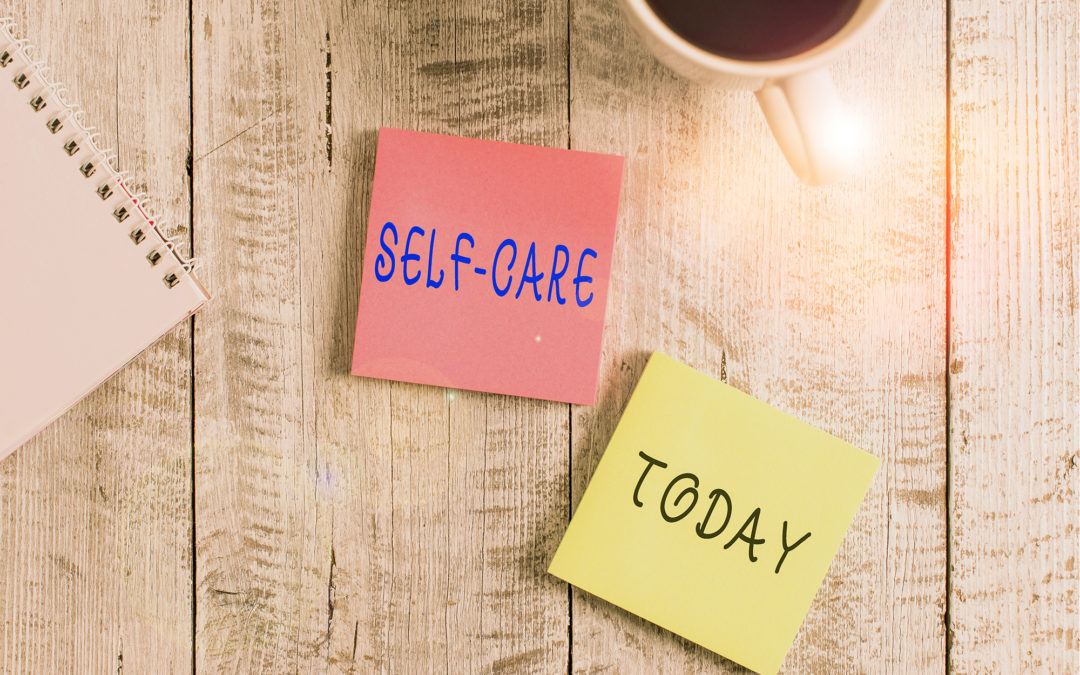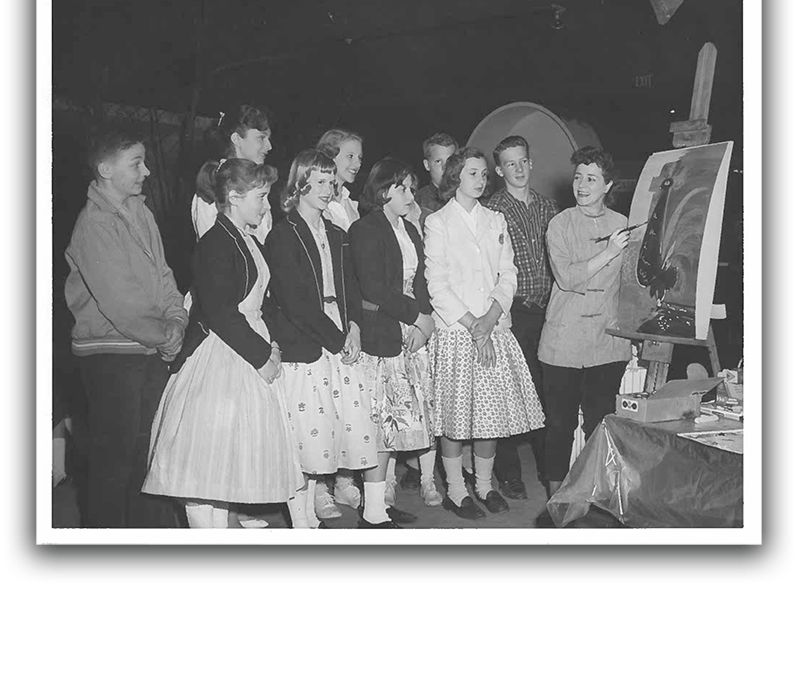
by North Shore Child & Family Guidance Center | Apr 3, 2020 | COVID-19, In The Media
Featuring Elissa Smilowitz, WCWP radio, March 24, 2020
This show is a joint effort of Richard Solomon, Esq., WCWP 88.1FM, the Nassau County Bar Association, and the North Shore Child & Family Guidance Center to help all of us who are currently “sheltering in place” and “social distancing” during this difficult time.
(The Continuing Legal Education –CLE– course code appears both in the audio and visual portions of the show for those seeking credit).
Our expert is LCSW Elissa J. Smilowitz who discusses the psychological perspectives of the current pandemic. Questions were submitted in advance of the broadcast and involve establishing routines, reducing news consumption, taking care of yourself, the reality of children at home while parents need to tele-commute and other dimensions of the current situation. For attorneys, this is a opportunity to listen to a very timely CLE.
Speaking of CLE credit – you can find other classes from the Nassau County Bar Association on this channel using the following links:
Nassau County Bar Association’s (NCBA) CLE on the radio 2019 – Electronic Discovery 101 https://youtu.be/beK0GdpaJaQ NCBA CLE– 11-18-19
Part 1 of 2 –Thriving in the Music and Entertainment Business https://youtu.be/wh5tAvE9knw
Part two: https://youtu.be/zh0x6FeIMRY for more information, please visit: https://northshorechildguidance.org/
Please note that Elissa is the coordinator of triage and emergency services making her highly qualified to discuss this topic.
This class is appropriate for everyone facing the challenges of the outbreak and are looking for validation of the difficulties and strategies to stay calm and move forward. Stay safe and please follow all guidelines published by the various authorities.

by North Shore Child & Family Guidance Center | Apr 3, 2020 | COVID-19, In The Media
By Jenna Kern-Rugile is Director of Communications at North Shore Child Guidance – Blank Slate Media, March 28, 2020
Everyone, regardless of their age, has been thrown for a loop by this strange, new reality we are all living in. The coronavirus — in particular, COVID19 — has impacted our lives in ways we never could have anticipated.
This is an especially scary time for kids, whose routines have been turned upside down. But how do we make sure our children aren’t overwhelmed by fear of this disease?
First, some good news: So far, it appears that the virus produces mild symptoms in children. It has been serious (and yes, even deadly), but the vast majority of people who have died have had significant underlying health issues.
Of course, we can’t be certain what will unfold as the virus continues to spread globally. And, even if they are reassured that the virus is unlikely to cause them direct harm, children are very worried about their parents and grandparents.
With so much still unknown, it’s hard not to let the worry train go off the rails.
Whether you are just mildly concerned, extremely worried or somewhere in between, it’s crucial that you remain calm so that you don’t burden your children with unnecessary angst.
“As a parent, you need to be very careful not to put your fears and anxieties onto your child,” said Dr. Sue Cohen, director of Early Childhood and Psychological Services at North Shore Child & Family Guidance Center. “Even if you’re feeling very anxious, you don’t want to catastrophize.”
What you choose to tell your child depends in part on their age. “Give them information in amounts they can handle according to their developmental level,” said Cohen. “There’s no need to bombard them with the whole CDC report. They need bits of information that are easily understandable.”
It’s important to clarify any misconceptions they may have, she added. “Ask your kids what they have heard about the virus, so you’ll understand where their fears are coming from. As is the case with any situation, let them know you are available to speak to them about any concerns they might have.”
You want your kids and teens to feel like they have some power when so much is out of their control. One way to do that is to share with them the best hygienic practices to prevent them from catching the virus, as well as a cold or any type of respiratory illness. Said Cohen, “Be their role model when it comes to hand washing and other preventive measures.”
Some other helpful tips:
• Create a daily schedule that lays out time for such activities as schoolwork, walks and exercise, screen time, chores, meals and creative time.
• Try to get your kid outside each day, as weather permits. Though they shouldn’t be playing with friends, they can play with each other, with you or on their own — but don’t be surprised if they need you more than usual.
• Use technology to keep them connected to their friends, grandparents and other important people in their lives. Social distancing does not need to mean social isolation.
• It’s a great time to encourage reading. You can even do a family “read-in,” where you choose a book appropriate for everyone and take turns reading, or listen together to an audiobook.
• Your local libraries may be closed, but they’re still a wonderful resource. Visit their websites to learn about activities you can do to keep your kids happy while they learn and play.
• Encourage your children to take up a new hobby or explore something they have expressed interest in. Many different companies are providing free classes in art, yoga, music and a slew of other activities.
• Keep their exposure to the news limited, which is good advice for adults, too.
• If your child’s fears are intense, contact North Shore Child & Family Guidance Center, which can provide therapeutic services remotely.
How to Get Help
North Shore Child & Family Guidance Center is available to help you and your children handle the heightened anxieties that are prevalent during this difficult time.
Their therapists are seamlessly conducting sessions for both new and existing clients via telephone and video conferences.
Call the Guidance Center at (516) 626-1971, or email info@northshorechildguidance.org. For more information, visit www.northshorechildguidance.org.

by North Shore Child & Family Guidance Center | Mar 20, 2020 | Blog, COVID-19
By Jennifer Pearlman, LMHC at North Shore Child & Family Guidance Center
I keep waiting for this to end so I can tell my family and friends about this crazy, unrealistic movie I watched about the entire world shutting down over a contagious virus called COVID-19. And then I must remind myself that this is not a movie, it is the current reality of the entire world.
Everyone is now in a scramble, trying to adjust to the “new normal.” We are all being severely impacted by this pandemic in very real, serious ways. Loss of life, loss of jobs, loss of stability and security, loss of education, loss of business, loss of human contact and socialization and loss of control. That is a lot of loss.
While many people are making sure to take care of their physical needs (washing their hands, stocking up on food, social distancing, etc.), we need to take care of our emotional needs as well. We are in completely unchartered territory and, in a matter of days, we have gone into a state of complete uncertainty, fear and unpredictability. There is an understandable and palpable increase in people’s feelings of anxiety and depression.
The question is, how do we make sure to address our emotional needs during this crisis? Often, we go into “autopilot” mode and focus on taking care of everyone else’s needs, but we manage to let our own needs fall to the wayside. As therapists, we feel this need to take care of everyone else’s anxiety and panic, to help others through this crisis. We are wired to help people.
The anxiety and panic that people are experiencing is so real and so palpable. We have no idea how things will play out. Many of our clients are reaching out for help. Many parents are at a loss as to what to tell their children, or how to help their kids when their own anxiety levels are through the roof.
As therapists, it is imperative that we remember that in order to be able to take care of others, we must take care of ourselves as well. I’ve had so many fellow therapists reach out asking how they are supposed to help their clients through this crisis, when they themselves are falling apart and barely functioning. I am going to give a couple of suggestions that I have personally found extremely helpful.
1. NORMALIZE YOUR OWN ANXIETY: You are not superhuman and it is COMPLETELY NORMAL to be feeling a tremendous amount of anxiety over the change, uncertainty and fear surrounding this new pandemic. Trying to “get over it” or minimizing your anxiety is only going to make it worse. Think of what you would tell your clients. Just as you would validate your clients’ anxieties surrounding what is going on, make sure you are validating your own anxiety as well.
2. IDENTIFY TRIGGERS AND LIMIT THEM AS MUCH AS POSSIBLE: The news media and social media are two of the biggest triggers that have been raising people’s anxiety, panic and hysteria. While it is important to stay up to date and know what is going on (mandatory quarantines, shutdowns, school closures and more) it is not necessary to incessantly check every single update and every new confirmed case of the Coronavirus. When the news puts up videos of empty shelves in grocery stores, it leads people to a complete state of panic where they feel the need to rush out and stock up on inordinate amounts of food. There is a lot of misinformation out there, especially being posted on social media. If you are easily triggered by these things, please do yourself a favor and limit or take a break from it for as long as you need. There is nothing wrong with acknowledging that certain things are just not working for us. In fact, it can be extremely empowering and brave. Watching all these reports and seeing the barrage of messages posted on social media can be very detrimental to our mental health, and it is not productive.
3. SELF-CARE: I cannot stress this enough. Self-care is like oxygen during a time like this. We need it to survive. You may have to get a little bit creative in thinking about how to go about that (with everyone home and in tight quarters), but there are plenty of things to do that don’t involve going out to the spa and getting a massage. You can read for 30 minutes with a hot chocolate and your feet up on your couch; you can go run around the block for a jog; you can take a bubble bath and listen to relaxing music; you can Facetime a friend and just talk; you can watch your favorite movie…. Figure out what works for you and make sure to set aside some time to do it, daily!
4. FOCUS ON THE THINGS THAT ARE IN YOUR CONTROL: While there are many things that are completely out of our control, which has contributed to the fear a lot of us are feeling, there are still things that are very much in our control, and it is extremely helpful to put our energy and focus on that. We can control how much time we spend reading the news and going on social media; how we choose to use our time; how we take care of ourselves and our families; our perspective; and our attitude and behavior.
5. RADICAL ACCEPTANCE: ACCEPTING THE THINGS THAT WE CANNOT CHANGE. While difficult to achieve, this can be very liberating. We spend so much time and energy on things that are way beyond our control, which generally only increases our feelings of fear, anger and sadness. By fully accepting the way things are, we are not discounting our feelings around what is going on; we are simply acknowledging that it is beyond our control.
6. THERE IS NO ONE WAY TO GRIEVE: A close friend of mine suddenly and tragically lost a very close relative of hers. I remember going over there that night and, while there wasn’t much I could say other than just hug her and cry with her, I remember the one thing I told her family. There is no one way to grieve. Everyone has different responses to trauma and grief, and we need to accept where people are in the process. The same is true for what is going on now. There is no one way to handle a crisis. Everyone needs to figure out what works for them, and we need to be tolerant and accept people’s responses, even when they vary greatly from ours. Some people will need to talk about it a lot, while others prefer not to. Some will choose to self-quarantine out of precaution, others will choose not to. There is no one right way. Remember that. Don’t impose your opinions and beliefs on others, just be there to support each other through this really hard time. We are all in this together.
7. BE PREPARED, NOT PANICKED: There is a big difference between taking precautions and being prepared and being panicked. Panicked is going out and buying 12 years’ worth of toilet paper. Being prepared is having enough supplies in the house in case there is a mandatory lockdown or quarantine for 14 days. The panic and mass hysteria are what leads to people feeling the need to hoard items and food so there is a complete shortage of certain supplies, further increasing the panic and hysteria. Take precautions. Prepare but try not to panic.
8. STRUCTURE: Even if you are in quarantine, it can be extremely helpful to add structure to your day. Wake up, get dressed, take a walk outside, do an exercise video, get work done on the computer, make lunch….create a routine for yourself that works and try to stick to it as much as you possibly can.
9. SOCIAL DISTANCING DOESN’T MEAN SOCIAL ISOLATION: Just because we need to physically distance ourselves from others doesn’t mean we need to isolate. Pick up the phone and reach out to family and friends. FaceTime those who are close to you. It can be extremely lonely to be at home and not be able to go out. Make sure to reach out and find other ways to connect to people.
10. TAKE ONE DAY AT A TIME: Don’t start thinking eight months down the road and catastrophizing that your kids are never going back to school. Focus on putting one foot in front of another and taking one day at a time. You just need to get through today, and you will worry about tomorrow tomorrow. Mindfulness and meditation can be a really helpful way to train yourself to stay focused on the present moment. There are many apps available that can help you with this.
11. REACH OUT FOR HELP IF YOU NEED: There is no shame in acknowledging you need help. Almost all therapists and agencies are now offering Telehealth, so you don’t need to leave your home to get the support.
While these are extremely trying and scary times for everyone, this is going to pass. It may take some time, but we have survived pandemics in the past and we will survive this one as well. We are all in this together. Sending lots of love and support everyone’s way.
by North Shore Child & Family Guidance Center | Mar 16, 2020 | Press Releases
Roslyn Heights, NY, March 2, 2020— More than 50 fans of Jeopardy and Trivial Pursuit had a terrific night as North Shore Child & Family Guidance Center hosted its second annual Trivia Night on February 27th at Gino’s Trattoria and Pizzeria of New Hyde Park.
The fun-filled fundraiser featured unlimited wine, beer, soft drinks and appetizers, along with trivia from movies, music, sports and more. Most importantly, it helped support the Guidance Center’s many programs to help kids and teens with issues such as depression, anxiety and substance use disorder.
Jeff Greenblatt, Assistant Counsel Regulatory at PSEG Long Island and co-chair of Trivia Night, was excited to play a role in the event. “Long Island is a special place,” said the Roslyn resident. “It’s where I grew up, work and raise my family. I always feel good anytime I’m able to give back to the local community. That’s why it’s such an easy decision to support an agency like the Guidance Center now and in the future.”
The event’s other co-chair, Syosset’s Josh Brookstein, Partner at Sahn Ward Coschignano PLLC, said the Trivia Night fundraiser was a terrific way to have a great time while supporting the lifesaving work of the Guidance Center: “Whether it is providing youngsters with a safe place to play while their grown-ups deal with contentious matters in Nassau County Family Court, or it is providing critical early childhood and mental health care, the Guidance Center is dedicated to restoring and strengthening the well-being of all children and their families.”
Guidance Center Board President Paul Vitale, who spoke at the event, thanked the co-chairs, attendees and event sponsors Anton Media, DG Capital, PSEG Long Island and Sahn Ward Coschignano. “Jeff and Josh did a wonderful job bringing their many friends and colleagues out to have loads of fun in a friendly and spirited competition,” said Vitale. “We are so grateful to everyone who came out to support the Guidance Center’s lifesaving work.”
The annual event will be held again next year in February and is open to the public.
About Us:
As the preeminent not-for-profit children’s mental health agency on Long Island, North Shore Child & Family Guidance Center is dedicated to restoring and strengthening the emotional well-being of children (from birth – age 24) and their families. Our highly trained staff of psychiatrists, psychologists, social workers, vocational rehabilitation counselors and other mental health professionals lead the way in diagnosis, treatment, prevention, training, parent education, research and advocacy. The Guidance Center helps children and families address issues such as depression and anxiety; developmental delays; bullying; teen pregnancy; sexual abuse; teen drug and alcohol abuse; and family crises stemming from illness, death, trauma and divorce. For more than 65 years, the Guidance Center has been a place of hope and healing, providing innovative and compassionate treatment to all who enter our doors, regardless of their ability to pay. For more information about the Guidance Center, visit www.northshorechildguidance.org or call (516) 626-1971.

by North Shore Child & Family Guidance Center | Mar 16, 2020 | Blog
Back in the early 1950s, when the suburbs on Long Island were rapidly expanding, very few mental health services were available, especially for children. In many families, issues such as depression and anxiety weren’t spoken about openly. In fact, they were considered shameful.
But not everyone was ignoring the reality that young people needed help.
The vast majority of the founders of North Shore Child & Family Guidance Center were women. In this National Women’s History Month, we’d like to celebrate some of those who were pioneers in recognizing the need for an agency such as ours on Long Island and turning the dream into a reality.
In 1952, Annabelle Bagdon and Beatrice Cohart began a research project looking at other guidance centers around the country and trying to identify possible financial backers for the creation of a guidance center here in Nassau County.
One year later Ruth Blank, who became the first president, attended a meeting that’s come to be known as the historic start of the “North Shore Child Guidance Association.”
With the help of others, these women reached out to the community to teach them about the agency in a report called “A Year of Work is Over.” The report went far in educating the community about the need for mental health services in the new suburban climate, fighting against the stereotype that mental health problems were confined only to the underprivileged or poor.
Fundraising was a difficult task, but this group of (mostly) women were determined. By 1956, they managed to raise $20,000 – worth a lot more in 1956 than today. Mae Addelson, who would later serve as president, led the membership drive.
On March 6, 1956, the Guidance Center opened on a part-time basis as the first independent community-supported mental health clinic in Nassau County, headquartered in Great Neck.
Bea Cohart was instrumental in the launch of the Guidance Center’s newsletter, called Guidelines, which still exists to this day.
Another leader was Doris Salzberg, a board member who served as the chairperson of the Art Festival, which began in 1956. Joan Salzman learned of the Guidance Center through this festival, and later went on to become president of the board.
Ruth Blank and Laura Kaplan are two other early Guidance Center women of distinction, starting the Community Conference, mental health workshops that were popular for more than 25 years.
Another hero: Nancy Marks, a devoted donor who brought famed anthropologist Margaret Mead to speak at an overflow crowd at the Great Neck South Junior High School in 1970.
In 1974, the Guidance Center named Marion S. Levine as its director. She served in this role through 2006, helping the Guidance Center become the preeminent children’s mental health organization on Long Island.






